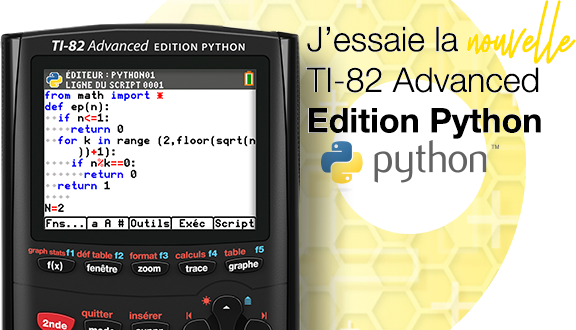TRUE OR FALS DBMS GPT QA
DownloadTélécharger
Actions
Vote :
ScreenshotAperçu

Informations
Catégorie :Category: nCreator TI-Nspire
Auteur Author: SPITZER2001
Type : Classeur 3.0.1
Page(s) : 1
Taille Size: 5.16 Ko KB
Mis en ligne Uploaded: 20/11/2024 - 18:06:14
Uploadeur Uploader: SPITZER2001 (Profil)
Téléchargements Downloads: 12
Visibilité Visibility: Archive publique
Shortlink : https://tipla.net/a4329914
Type : Classeur 3.0.1
Page(s) : 1
Taille Size: 5.16 Ko KB
Mis en ligne Uploaded: 20/11/2024 - 18:06:14
Uploadeur Uploader: SPITZER2001 (Profil)
Téléchargements Downloads: 12
Visibilité Visibility: Archive publique
Shortlink : https://tipla.net/a4329914
Description
Fichier Nspire généré sur TI-Planet.org.
Compatible OS 3.0 et ultérieurs.
<<
Module 1: Introduction to DBMS True/False: "A DBMS can only store data in structured formats like tables, limiting its use for unstructured data." Justification: False.While relational DBMSs store data in structured formats like tables, other types of DBMSs, such as NoSQL databases, are designed to handle semi-structured or unstructured data, including JSON documents or key-value pairs. This flexibility makes NoSQL DBMS suitable for applications like content management and big data processing. True/False: "ACID properties ensure that all transactions in a DBMS are reliable, even in cases of system failure." Justification: True. Atomicity ensures transactions are either fully completed or fully undone, consistency maintains the validity of data before and after a transaction isolation prevents interference between concurrent transactions, and durability ensures that committed changes are permanent, even in the event of a crash. True/False: "A deadlock in a DBMS occurs when two or more transactions compete for the same resources but eventually resolve on their own." Justification: False. Deadlocks occur when two or more transactions are waiting for resources held by each other, creating a cycle of dependency that prevents any of them from proceeding. Deadlocks require intervention through timeout mechanisms or deadlock detection algorithms. True/False: "Three-tier DBMS architecture improves scalability and security by separating the application logic from the database and user interface layers." Justification: True. In a three-tier architecture, the middle tier (application server) processes business logic, isolating the database layer from the user interface. This separation enhances modularity, scalability, and security by restricting direct database access. True/False: "Foreign keys in a relational database enforce referential integrity by ensuring that a value in the foreign key column must exist in the primary key column of the referenced table." Justification: True. Referential integrity prevents orphaned records and ensures that relationships between tables remain consistent. For example, if a foreign key references a primary key in a parent table, the parent record must exist before the foreign key value can be inserted. Module 2: Data Models and ER Diagrams True/False: "A weak entity in an ER diagram must always have a primary key composed of its own attributes." Justification: False. A weak entity depends on a strong entity for identification and often has a composite primary key that includes its own attributes and the primary key of the related strong entity. For instance, an OrderItem weak entity might use OrderID (from the Order entity) as part of its composite primary key. True/False: "Recursive relationships in ER diagrams allow entities to relate to themselves, often representing hierarchies like 'manages' or 'reports to.'" Justification: True. Recursive relationships are used to model situations where an entity has a relationship with itself. For example, in an Employee entity, a recursive relationship can represent an employee managing another employee. True/False: "Conceptual data models include implementation details such as data types and indexing mechanisms." Justification: False. Conceptual data models are high-level abstractions focusing on entities, attributes, and relationships without including implementation details, which are addressed in the logical and physical data models. True/False: "In a one-to-many relationship, the foreign key is placed in the entity on the 'one' side of the relationship." Justification: False. The foreign key is placed in the entity on the 'many' side of the relationship to reference the primary key of the entity on the 'one' side, establishing the relationship. Module 3: SQL Basics True/False: "The WHERE clause in SQL is used to filter rows after data is grouped using the GROUP BY clause." Justification: False. The WHERE clause filters rows before grouping, while the HAVING clause is used to filter grouped data after aggregation. True/False: "The INSERT INTO statement can add multiple rows in a single query by specifying multiple sets of values." Justification: True. SQL allows the insertion of multiple rows at once by separating value sets with commas, improving efficiency compared to inserting rows individually. True/False: "The DELETE command in SQL removes all rows from a table and its structure." Justification: False. The DELETE command only removes rows but retains the table structure. The DROP command is used to delete both rows and the table structure. Module 4: Advanced SQL Techniques True/False: "Window functions like ROW_NUMBER() and RANK() calculate aggregate values across a set of rows without collapsing them into a single output." Justification: True. Unlike traditional aggregate functions, window functions perform calculations over a specified range of rows and return a value for each row in the result set. True/False: "A trigger i
[...]
>>
Compatible OS 3.0 et ultérieurs.
<<
Module 1: Introduction to DBMS True/False: "A DBMS can only store data in structured formats like tables, limiting its use for unstructured data." Justification: False.While relational DBMSs store data in structured formats like tables, other types of DBMSs, such as NoSQL databases, are designed to handle semi-structured or unstructured data, including JSON documents or key-value pairs. This flexibility makes NoSQL DBMS suitable for applications like content management and big data processing. True/False: "ACID properties ensure that all transactions in a DBMS are reliable, even in cases of system failure." Justification: True. Atomicity ensures transactions are either fully completed or fully undone, consistency maintains the validity of data before and after a transaction isolation prevents interference between concurrent transactions, and durability ensures that committed changes are permanent, even in the event of a crash. True/False: "A deadlock in a DBMS occurs when two or more transactions compete for the same resources but eventually resolve on their own." Justification: False. Deadlocks occur when two or more transactions are waiting for resources held by each other, creating a cycle of dependency that prevents any of them from proceeding. Deadlocks require intervention through timeout mechanisms or deadlock detection algorithms. True/False: "Three-tier DBMS architecture improves scalability and security by separating the application logic from the database and user interface layers." Justification: True. In a three-tier architecture, the middle tier (application server) processes business logic, isolating the database layer from the user interface. This separation enhances modularity, scalability, and security by restricting direct database access. True/False: "Foreign keys in a relational database enforce referential integrity by ensuring that a value in the foreign key column must exist in the primary key column of the referenced table." Justification: True. Referential integrity prevents orphaned records and ensures that relationships between tables remain consistent. For example, if a foreign key references a primary key in a parent table, the parent record must exist before the foreign key value can be inserted. Module 2: Data Models and ER Diagrams True/False: "A weak entity in an ER diagram must always have a primary key composed of its own attributes." Justification: False. A weak entity depends on a strong entity for identification and often has a composite primary key that includes its own attributes and the primary key of the related strong entity. For instance, an OrderItem weak entity might use OrderID (from the Order entity) as part of its composite primary key. True/False: "Recursive relationships in ER diagrams allow entities to relate to themselves, often representing hierarchies like 'manages' or 'reports to.'" Justification: True. Recursive relationships are used to model situations where an entity has a relationship with itself. For example, in an Employee entity, a recursive relationship can represent an employee managing another employee. True/False: "Conceptual data models include implementation details such as data types and indexing mechanisms." Justification: False. Conceptual data models are high-level abstractions focusing on entities, attributes, and relationships without including implementation details, which are addressed in the logical and physical data models. True/False: "In a one-to-many relationship, the foreign key is placed in the entity on the 'one' side of the relationship." Justification: False. The foreign key is placed in the entity on the 'many' side of the relationship to reference the primary key of the entity on the 'one' side, establishing the relationship. Module 3: SQL Basics True/False: "The WHERE clause in SQL is used to filter rows after data is grouped using the GROUP BY clause." Justification: False. The WHERE clause filters rows before grouping, while the HAVING clause is used to filter grouped data after aggregation. True/False: "The INSERT INTO statement can add multiple rows in a single query by specifying multiple sets of values." Justification: True. SQL allows the insertion of multiple rows at once by separating value sets with commas, improving efficiency compared to inserting rows individually. True/False: "The DELETE command in SQL removes all rows from a table and its structure." Justification: False. The DELETE command only removes rows but retains the table structure. The DROP command is used to delete both rows and the table structure. Module 4: Advanced SQL Techniques True/False: "Window functions like ROW_NUMBER() and RANK() calculate aggregate values across a set of rows without collapsing them into a single output." Justification: True. Unlike traditional aggregate functions, window functions perform calculations over a specified range of rows and return a value for each row in the result set. True/False: "A trigger i
[...]
>>












